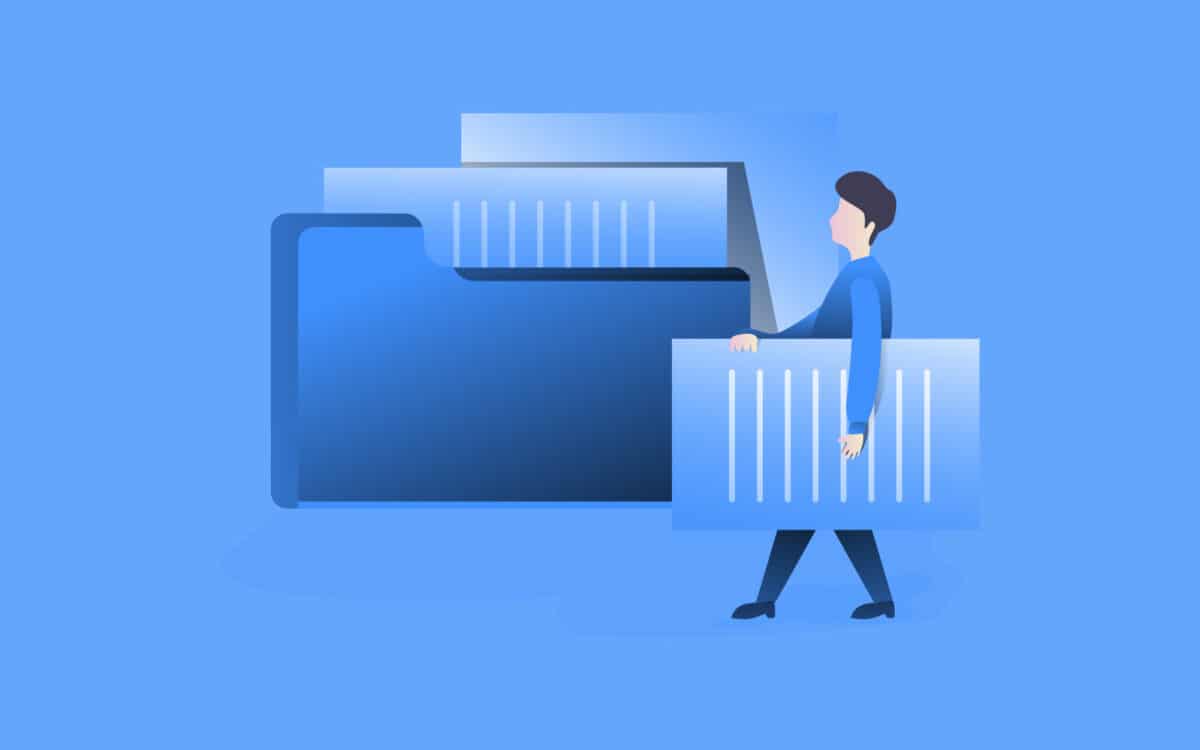When file management and the ability to securely share files between different parties works properly. It should feel easy to do and “just work”.
The more steps involved, or specialized instructions for someone to remember, the higher the chance of an error taking place. What’s even worse: the harder file sharing and management are for your teams, the higher the probability that your team will try and circumvent those systems (to use something easier).
Our teams need file management and sharing to be fast and easy. As IT professionals, we also want those systems to be as secure as possible to prevent unwanted or accidental access. Or, worst case, a malicious intrusion into company systems.
It starts with Effective File Management
File Management within a business or corporation is the process of how digital files, documents, and data are organized, stored, and maintained. It includes everything from how files are named, filed (or categorized), and even archived. The goal is that when the files are needed, they are easy to find.
Effective file management is vital for more than just your operational sanity! Just like with paper, if files are easy to find and access, there will be a significant positive impact on productivity and efficiency.
The ‘golden triangle’ of effective file management includes:
- Easy to search or find the files you want.
- Easy for multiple users to share or collaborate.
- Easy to backup & recover if something goes wrong.

What kind of software do you use for file management?
File management typically utilizes document management systems to facilitate the ‘golden triangle’. These systems work in conjunction with your business’s private cloud and integrate directly with your operating system (such as Windows or Mac). This level of integration makes it very easy for your team to adopt (and hard for them to make errors).
A great file management system is easy to train a team to use and typically requires learning very few new actions. An example of an action your team would need to learn is how to invite an internal team member, external contractor, or client to review or collaborate on a file (or files).
Online access to files is no longer a ‘nice to have’ addition
Having secure access to your files from anywhere with an internet connection is no longer a ‘nice to have’. It is vital to company operations. From the CEO being able to access files on a major business trip, to sales teams, or even team members who are working remotely – it is a tool that effective teams have in place.
Online File Access is more than just being able to use your computer or laptop remotely. It also means that you can use any computer or mobile device to securely log in via a web browser to access the files that you need.
Easy Secure File Sharing is key in corporate environments!
The best file-sharing systems will make your team feel powerful and in control, while quietly helping prevent errors and protect the business.
Old-school file sharing (and why it has become updated)
The ‘old school’ method of file sharing is attaching a document to an email. The problem with this method is that you frequently have multiple users with different versions of the same file. How do you know which one is up to date? How do you prevent a newer file from being overwritten by an older one?
These ‘old school’ file-sharing issues need to be a part of everyone’s past, but they are still used today. It is critical that these methods are replaced by more modern methods of secure file sharing.
It is important to look at file sharing from 2 points of view:
- The employee/team member’s point of view
It needs to be easy and simple to share and collaborate. The more ‘steps’ or barriers to doing what they want, the higher the chance that team members return to more familiar methods of file sharing. - The management/IT point of view
Sharing files will always represent some form of risk. The more important or private the file, the more secure you want it to be. Shared files need to have access control, be encrypted, and be easy to track and audit.
Both of these points of view are correct, and the best file management and file-sharing systems consider both audiences.
Better than email attachments
Secure file sharing does not just make it easier by giving you a link to the file or directory. The ideal sharing systems also have ‘file sharing options’ that give you control of how that file is shared (and for how long). Examples of file-sharing options include:
- Password protects the file or folder you are sharing. This would require anyone with the link to input the password to access those shared files.
- View who accessed the file and how many times. Having an audit trail for the person and IP address that accessed your files is extremely valuable.
- Have shared file access auto-expire. The shared link you create can auto-expire either by date or the number of times accessed.
- Enable download or view only. Depending on the file you can allow the shared link recipient to just view the file or download the full file.
File Management & Secure File Sharing Examples
Securely share files with a customer
In this example, we want to securely share files with our customers. We do not want to attach these files to an email, as by doing so we lose control (and can’t tell if they were opened).
Using a great file management system, secure sharing is easy. Just:
- Right-click on the folder or file
- Hit share
- Adjust your options (in this case we want to add a password and an expiry)
- Once everything is configured, we are given a ‘share’ link which we can put into our client email.
Watch this short video for an example:
Running internal staff reviews using a file management system
Let’s explore an example of a better way to run staff/team reviews using modern file management and sharing.
The original method for quarterly reviews is emailing files back and forth between the team. As the files changed hands, it became increasingly difficult to keep track of who had the most up-to-date file and at what step of the review workflow the team was in.
Using a better file management system team reviews are much more smooth. Documents can be securely sent with clear instructions to anyone involved, a single document is used instead of having multiple versions of the same file, and there is a full audit trail to show who had access to that document, if they opened it, and when.
Watch this short video for an example:
Britec is here to help.
If you have questions about this article, or how better file management and secure file sharing can benefit your organization, please reach out to us here.
Some other articles you might enjoy include:

